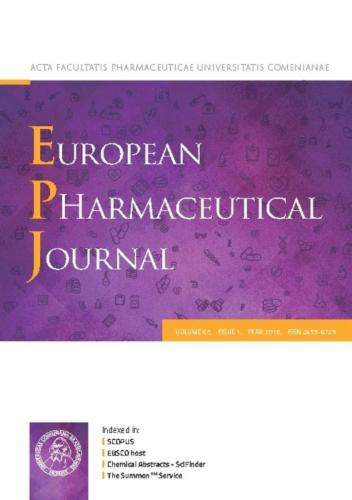含5′-硅基或-丁基的3′修饰木呋喃基核苷的合成及其对RNA病毒的抗病毒作用
IF 4.3
3区 医学
Q1 PHARMACOLOGY & PHARMACY
引用次数: 0
摘要
以相应的2 ',5 ' -二o -硅基-3 ‘ -外甲基尿苷为原料,通过光引发自由基介导的氢硫化反应制备了C3 ’位置上含有烷基硫基和葡萄糖硫基取代基的d -羟基呋喃烷基核苷类似物。3′-硫代分子的顺序去硅基化和5′- o -丁基化产生具有不同取代模式的24位核苷系列,并评估了这些化合物对SARS-CoV-2、SINV和CHIKV三种危险的人类RNA病毒的体外抗病毒活性。8种化合物在Vero E6细胞中表现出低微摩尔EC50值的SARS-CoV-2活性,其中2种化合物还能抑制病毒在人Calu细胞中的生长。2 ',5 ' -二o -硅基化3 ' - c -烷基硫核苷抗sars - cov -2活性最好。12种化合物对CHIKV病毒有体外抗病毒活性,14种化合物对SINV病毒有低微摩尔EC50值,其中5′-丁基-2′-硅基-3′-烷基硫代取代模式对这两种病毒最有利。在测试核苷的情况下,去除2 ' - o -硅基完全消除了化合物对所有三种病毒的抗病毒活性。结果表明,二苯乙烯化3′-糖基硫代木核苷具有较强的抗病毒活性,EC50值为3 μM,且在最高浓度为120 μM时无毒性作用。本文章由计算机程序翻译,如有差异,请以英文原文为准。

Synthesis of 3′-modified xylofuranosyl nucleosides bearing 5′-silyl or -butyryl groups and their antiviral effect against RNA viruses
D-xylofuranosyl nucleoside analogues bearing alkylthio and glucosylthio substituents at the C3′-position were prepared by photoinitiated radical-mediated hydrothiolation reactions from the corresponding 2′,5′-di-O-silyl-3′-exomethylene uridine. Sequential desilylation and 5′-O-butyrylation of the 3′-thiosubstituted molecules produced a 24-membered nucleoside series with diverse substitution patterns, and the compounds were evaluated for their in vitro antiviral activity against three dangerous human RNA viruses, SARS-CoV-2, SINV and CHIKV. Eight compounds exhibited SARS-CoV-2 activity with low micromolar EC50 values in Vero E6 cells, and two of them also inhibited virus growth in human Calu cells. The best anti-SARS-CoV-2 activity was exhibited by 2′,5′-di-O-silylated 3′-C-alkylthio nucleosides. Twelve compounds showed in vitro antiviral activity against CHIKV and fourteen against SINV with low micromolar EC50 values, with the 5′-butyryl-2′-silyl-3′-alkylthio substitution pattern being the most favorable against both viruses. In the case of the tested nucleosides, removal of the 2′-O-silyl group completely abolished the antiviral activity of the compounds against all three viruses. Overall, the most potent antiviral agent was the disilylated 3′-glucosylthio xylonucleoside, which showed excellent and specific antiviral activity against SINV with an EC50 value of 3 μM and no toxic effect at the highest tested concentration of 120 μM.
求助全文
通过发布文献求助,成功后即可免费获取论文全文。
去求助
来源期刊
CiteScore
9.60
自引率
2.20%
发文量
248
审稿时长
50 days
期刊介绍:
The journal publishes research articles, review articles and scientific commentaries on all aspects of the pharmaceutical sciences with emphasis on conceptual novelty and scientific quality. The Editors welcome articles in this multidisciplinary field, with a focus on topics relevant for drug discovery and development.
More specifically, the Journal publishes reports on medicinal chemistry, pharmacology, drug absorption and metabolism, pharmacokinetics and pharmacodynamics, pharmaceutical and biomedical analysis, drug delivery (including gene delivery), drug targeting, pharmaceutical technology, pharmaceutical biotechnology and clinical drug evaluation. The journal will typically not give priority to manuscripts focusing primarily on organic synthesis, natural products, adaptation of analytical approaches, or discussions pertaining to drug policy making.
Scientific commentaries and review articles are generally by invitation only or by consent of the Editors. Proceedings of scientific meetings may be published as special issues or supplements to the Journal.

 求助内容:
求助内容: 应助结果提醒方式:
应助结果提醒方式:


